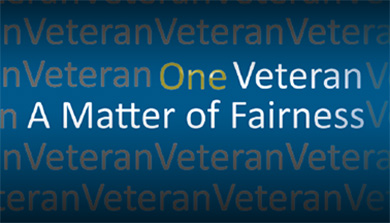
One Veteran...
Those who sustain similar illnesses or injuries while serving their country should have access to the same benefits, regardless of the nature of their service and where and when they served.

...A Matter of Fairness
Table of Contents
Contact Information
We encourage former and current members of the Canadian Armed Forces (CAF) and the Royal Canadian Mounted Police (RCMP), as well as their family members and other clients of Veterans Affairs Canada (VAC), who have questions about their rights or concerns about the benefits and services they receive from the Department to call the Office of the Veterans Ombudsman (OVO). We are there to provide information, referrals, and assistance in resolving issues. Each file that we open provides valuable information that helps us identify trends and systemic issues.
Calls within Canada (Toll-free):
1-877-330-4343
Email: info@ombudsman-veterans.gc.ca
Web site: www.ombudsman-veterans.gc.ca
Address: 360 Albert Street, Suite 1560, Ottawa, Ontario K1R 7X7
Letter to the Minister of Veterans Affairs
The Honourable Julian Fantino, P.C., M.P.
Minister of Veterans Affairs
House of Commons
Ottawa, Ontario
K1A 0A6
Dear Minister:
I am pleased to submit to you the 2012–2013 Annual Report for the Office of the Veterans Ombudsman, One Veteran: A Matter of Fairness. The report provides an overview of our operations and activities from April 1, 2012, to March 31, 2013, as well as our priorities for the coming year.
Yours sincerely,
Guy Parent
Veterans Ombudsman
Veterans Bill of Rights
The Veterans Bill of Rights applies to all clients of Veterans Affairs. They include:
- Veterans with war service
- Veterans and serving members of the Canadian Forces (Regular and Reserve)
- Members and former members of the Royal Canadian Mounted Police
- Spouses, common-law partners, survivors and primary caregivers
- Other eligible dependants and family members
- Other eligible clients
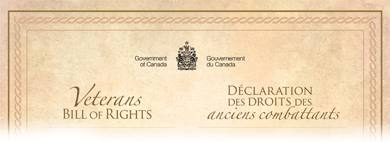
Veterans Bill of Rights
PDF
Veterans Ombudsman's Report
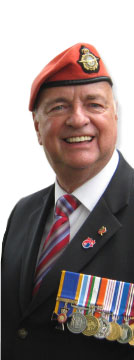
This is my third Annual Report as Canada’s Veterans Ombudsman. The year 2012-2013 was a watershed year for Veterans and their families.
It began with the Federal Court ruling disallowing the offset of Pension Act disability benefits from the Service Income Security Insurance Plan – Long-Term Disability Plan (SISIP LTD). The Court confirmed that disability pensions were not income, but rather compensation for pain and suffering. Therefore, the disability pension amounts could not be considered in the calculation of the income replacement benefits provided under group insurance plans. For Mr. Dennis Manuge, who led the class action suit, and the approximately 4,500 other former members of the CAF who were part of the suit, plus the additional approximately 3,000 plus former members who were affected also by the outcome, this was good news. The year ended with the lead-up to the April 2013 publication of my report, Improving the New Veterans Charter: The Parliamentary ReviewFootnote 1, the aim of which was to focus discussion for the fall 2013 parliamentary committee review of the enhancements to the New Veterans Charter that resulted from the coming into force of the Enhanced New Veterans CharterFootnote 2 (Bill C-55) on October 3, 2011, and to act as a catalyst to broaden the review of the New Veterans Charter.
Between these two significant events, my staff and I at the Office of the Veterans Ombudsman were busy applying my fairness principle to our work on a number of issues of importance to Veterans.
May 2012 Mental Health Week
In May 2012, during Mental Health Week, I emphasized the need for a Veterans’ ID card to help maintain contact with Veterans and to be able to identify potential unmet needs of the over 500,000 Veterans who are not clients of VAC. I noted that over the past three decades, there has been a high operational tempo within the CAF with more operations being conducted by fewer service personnel, resulting in many service members suffering from the cumulative effects of multiple deployments. The physical and mental health impact of these operations is only just now starting to become evident. As the stigma of having an operational stress injury begins to diminish, many Veterans who previously have not wanted to come forward may be more receptive to receiving services from the Department, and these Veterans may not be aware of existing benefits and services. Therefore, a Veterans’ ID card is needed and would be very beneficial to Veterans and to the Department as an outreach tool.
May 7, 2012 Released Second Report on Procedural Fairness
On May 7, 2012, I released my second report on procedural fairness, Veterans’ Right to Fair Adjudication: Analysis of Federal Courts decisions pertaining to the Veterans Review and Appeal BoardFootnote 3. An independent analysis by the law firm of Borden Ladner Gervais LLP confirmed that in 60 percent of Board decisions reviewed by the Federal Court, the Court ruled that the Board erred in fact or law, or failed to observe principles of procedural fairness. And, despite assurances from the Board that it analyzed Federal Court judgments to ensure that guidance given was reflected in its decisions, Court judgments pointed to the same errors over an extended period of time. On average, 50 percent of the Board’s review decisions and 33 percent of the Board’s appeal decisions varied or overturned a previous decision of VAC, in favour of Veterans. In fairness to Veterans and other applicants, the report concluded that improvements to the Board’s decision making process was needed.
Later in May 2012, I sat down with Bob Paulson, Commissioner of the RCMP
We agreed to create a multidisciplinary working group to focus on RCMP Veterans’ issues. Following that meeting, I met with Ms. Suzanne Tining, then-Deputy Minister of VAC, who agreed to work with us to set up a working group comprised of representatives of the RCMP, the RCMP Veterans’ Association, VAC and the OVO, along with other stakeholders. This work is ongoing.
Also in May 2012, I appeared before the House of Commons Standing Committee on Veterans Affairs to speak to the Transformation underway within VAC
I emphasized that transformation must focus on the needs of Veterans and their families, rather than on the administrative needs of VAC. I noted that while some of the changes announced, such as upfront payments for grounds maintenance and housekeeping services under the Veterans Independence Program, were good first steps, the Department’s responsibility did not cease with system change; follow-up and continuous improvement must be part of transformation. I also pointed out that the OVO had done considerable work in this area. For example, in February 2012, we had released my first report on procedural fairness Veterans’ Right to Know Reasons for Decisions: A Matter of Procedural FairnessFootnote 4, which provided recommendations to the Department to assist with their written correspondence to Veterans. In addition, I noted that it was the OVO that developed the Benefits Navigator tool for the Department and Veterans to use to help unravel the complexity surrounding programs and benefits. A full account of my testimony is available on our Web siteFootnote 5.
June 2012 All-Staff Meeting to Plan for the Year Ahead
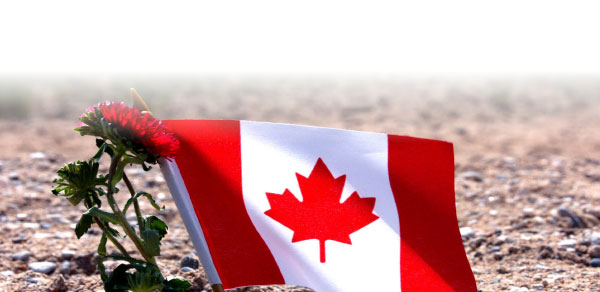
In June 2012, my team assembled for an all-staff meeting to plan strategically for the year ahead. We used the time to plan for systemic reviews, identify possible areas of concern, and generally ensure that the team was working together towards a common goal—the fair treatment of all Veterans. In particular, we decided to continue looking at issues of procedural fairness throughout the adjudication process. We also decided to monitor decision letters from VAC, and ensure that the recommendations laid out in our report on “reasons for decision” were being implemented. In addition, we agreed to follow-up on our analysis of Federal Courts’ decisions pertaining to the Veterans Review and Appeal Board to ensure that improvements were being made based on the recommendations laid out in my report. Finally, we planned to produce follow-up reports on both of these issues in order to keep you informed of the progress being made.
July 2012 Commented on SISIP Federal Court Decision

In July 2012, I commented again on the SISIP Federal Court decision because since the decision was announced in April, there had been very little communication as to when or how the changes were going to be implemented. I reported to Veterans that I had engaged VAC and recommended to VAC that it communicate clearly to Veterans how they would implement the “go forward” aspects of the decision to which the Minister had committed. I also let Veterans know that the Department had informed me that it was committed to ending, as quickly as possible, the practice of offsetting Pension Act disability pensions from its programs, namely the War Veterans Allowance, the CAF Income Support Benefit and the Earnings Loss Benefit.
Also in July 2012, I was in Charlottetown meeting with the new Deputy Minister of VAC
I met with Mary Chaput, who replaced Suzanne Tining on July 16, and with John Larlee, the Chairman of the Veterans Review and Appeal Board. Ms. Chaput emphasized that the Department would continue to be supportive and transparent in its dealings with the Office. As in the past, we agreed that while we, the Office and the Department, might sometimes disagree, we will never forget that our common objective is to ensure that Veterans and their families are treated with fairness, dignity and respect. Mr. Larlee informed me that the Veterans Review and Appeal Board was working to implement the recommendations from our report on the Board. We discussed the publication of noteworthy decisions by the Board and Mr. Larlee informed me that the Board was working jointly with the Bureau of Pension Advocates to expedite cases returned from the Federal Court and also that the Board had begun to offer hearings by video conference, which can be arranged within six weeks rather than six months.
October 2012 Appeared Before the Standing Committee
In October 2012, following a couple of busy months of outreach activities, I again appeared before the Standing Committee on Veterans Affairs, this time on the Veterans Review and Appeal Board processes and activities. The Committee’s decision to review the processes of the Board was made shortly after my Office published its report. I was pleased that the Committee had undertaken to review the Board’s processes and activities and I was hopeful that the work of the Committee would result in improvements to the Board’s operations, ensuring fairness in the redress process. I focused my testimony on the need for increased transparency throughout the review and appeal process – from hiring of Board members to the publishing of decisions.
A full account of my testimony is available on our Web site.Footnote 6
November 11, 2012 Remembrance Day
On November 11, 2012 – Remembrance Day – I paid tribute to those Veterans who had lost their lives in service to our country. I also reflected on the fact that on that day, I began the third year of my five-year term as Canada’s Veterans Ombudsman. In the past two years, my Office had responded to 16,500 calls, emails and letters, and handled close to 4,000 cases. We had produced key reports that had received a prompt response from the Minister of Veterans Affairs. We had developed the Benefits Navigator which was adopted and adapted by the Department to become the Benefits BrowserFootnote 7, and used by Client Service Team members to determine what benefits and services an individual Veteran may be eligible. We had also successfully helped individual Veterans in many ways, such as, helping to open up the Exceptional Incapacity Allowance eligibility, resulting in close to 600 Veterans receiving retroactive payments totalling $14 million, and helping 70 previously denied applicants, including caregivers, receive the $20,000 Agent Orange ex-gratia payment.
December 5, 2012 Treatment of Veterans at Sunnybrook Hospital
On December 5, 2012, with great concern for the allegations regarding the treatment of Veterans at Sunnybrook Hospital, I informed the Minister of Veterans Affairs that my Office would act as an observer to the VAC team conducting the audit of the Sunnybrook Veterans Centre. I wanted to ensure that the audit would be as thorough as necessary to fully identify and address issues of concern consistent with the mandate of the Veterans Ombudsman, and to make certain that Veterans were treated fairly and with dignity. I ended up acting as Chair of the External Advisory Committee, which included representatives of Veterans organizations and health professionals. Two senior members of my management team, Colonel (retired) Charles Cue and Chief Warrant Officer (retired) Michel Guay were at Sunnybrook in December 2012 and attended all meetings between the VAC audit team and Veterans, their families and staff of the facility. Their presence enabled me to ensure that the audit was evidence-based, comprehensive and objective. On several occasions, I met with the External Advisory Committee to review the findings of the audit, and to make sure that all concerns were given due consideration.
On December 11, 2012, I released my report entitled, Honouring and Connecting with Canada’s Veterans: a National Veterans Identification CardFootnote 8
I recommended to the Minister of Veterans Affairs the formal recognition of former RCMP members as Veterans for commemorative purposes and the issuance of an official identification card for Canada’s Veterans. I noted in the report that currently, Canada’s nearly 750,000 Veterans do not hold a common and widely recognized means of identifying themselves as Veterans. They hold no such document that acknowledges their service to Canada, for commemorative purposes or to access the care and services to which they are entitled.
A national Veterans identification card would also allow VAC to identify and maintain contact with Canada’s Veterans, including those who are not currently its clients.
I believe that this is critical to effective communications, intervention and planning for future needs. In the report, I also recommended an amendment to the definition of the term Veteran currently used for commemorative purposes so to formally include former RCMP members.
February 1, 2013 Assistance with Funeral and Burial Expenses
On February 1, 2013, I again spoke up about families who struggled when they approached VAC for assistance with funeral and burial expenses for low income Veterans. With an average cost of a funeral in Canada being between $7,000 and $10,000, VAC provided only $3,600 for funeral-related services, an amount that had not changed since 2001. In contrast, the Department of National Defence and the RCMP provided up to $12,700 in the event of the death of a serving member. I didn’t think that was right and neither did most Veterans and Veterans’ organizations. Low income Canadian Veterans, who were ready to lay down their lives for our country, deserve our enduring respect and a dignified departure. My major concerns were summed up in my report, Serve with Honour, Depart with Dignity - An Administrative Review of the Funeral and Burial Assistance Program for Veterans Affairs CanadaFootnote 9. Since becoming Veterans Ombudsman in November 2010, I have actively pursued its recommendations with both the former and then-current Minister of Veterans Affairs, but as of February 2013, only one of the seven recommendations has been implemented: the recommendation concerning communicating the program better to Veterans. During the same period, more than 60,000 Veterans passed away. Finally, in the Government of Canada’s Budget, Economic Action Plan 2013, the amount of money for funeral expenses was increased from $3,600 to $7,376. Also, it was announced that the Department will simplify the administration of the Program by no longer requiring that families provide an itemized list of every single funeral-related expense. It’s a good start, but more still needs to be done to ensure that in their hour of grief, families of deceased Veterans should not have to struggle with bureaucratic complexities.
On February 4, 2013, I released my third report on procedural fairness entitled, Veterans’ Right to Disclosure: A Matter of Procedural FairnessFootnote 10
The report made a number of recommendations to improve the administrative practices used by VAC when processing applicants’ service and health records. The recommendations addressed several key points including the fact that there were no provisions in the application process to provide applicants with copies of documents forwarded to adjudicators. By not disclosing the information, applicants were being denied the opportunity to provide their own information, for example, by noting or supplying missing information or to challenge information that would be reviewed by adjudicators. The failure to disclose information and the practice of not considering records provided by applicants also infringed applicants’ obligation to substantiate their claim, as specified in the legislation. In addition, the practice of ‘flagging’ documents was also of concern to me. Disability benefits officers did not have the delegated authority to make decisions on applications, yet by drawing attention to specific information, they were making decisions pertaining to the relevance of evidence, which might influence adjudicators and introduce bias into the adjudication process.
Therefore, my report recommended that the Department modify its procedure to ensure procedural fairness. It is my opinion that administrative practices, as much as they might aim for increased effectiveness, should never stand in the way of procedural fairness, particularly when it comes to Veterans’ and serving members’ rights to participation and to a fair hearing.
On February 7, 2013, I spoke up about the Minister of Veterans Affairs’ release of the reportFootnote 11 of the independent Scientific Advisory Committee on Veterans’ Health
The Scientific Advisory Committee was formed to review and assess the information available on the health effects and potential exposure of CAF personnel to depleted uranium. Although conducted thoroughly and objectively, the Committee concluded that it is unlikely that CAF members have been exposed to levels of depleted uranium (DU) that could be harmful to their health, but with the caveat that “there are many Veterans suffering from persistent symptoms following deployment or military conflict which, although not linked to specific exposures such as DU, can cause considerable suffering.” In keeping with my lens of fairness, I pointed out that what must never be forgotten is that many CAF members go on a mission healthy but return from duty ill for unknown reasons. That is a fact that must be acknowledged by VAC.
March 6, 2013 Veterans Independence Program
On March 6, 2013, I spoke up about the Veterans Independence Program because when I see elements within a program that marginalize support to families, it gets my attention. The program provides benefits to survivors under the Veterans Health Care Regulations. However, it has some inherent incongruities that needed to be addressed. For example, if a War Services Veteran and a caregiver, in this case the spouse, received both housekeeping and grounds maintenance services, the caregiver would keep both services when the Veteran died. If the same War Services Veteran did not receive housekeeping and grounds maintenance services, then the low-income caregiver could apply and receive both services after the Veteran’s death. However, if the same Veteran and caregiver received one of the two services, then the low-income caregiver could only keep the service that was in place at the time of the Veteran’s death. The caregiver could never receive the second service even if there was a need for it. That made no sense to me. I believe that access to these services should be based solely on need, not on the nature of Veterans’ military service and whether or not they were in receipt of housekeeping or grounds maintenance services prior to their death. This is the least we can do to acknowledge the service of our Veterans and the families that have supported them. Over the coming months, my Office will complete a series of reports examining the benefits provided to ill or injured Veterans to enable them to live independently at home with recommended changes.
On March 19, 2013, I spoke up for RCMP Veterans caught up in their own SISIP situation
As you know, last MayFootnote 12 the Federal Court disallowed the offset of Pension Act disability benefits from the Service Income Security Insurance Plan – Long-Term Disability Plan. However, a similar practice is still affecting RCMP Veterans. What’s more, a lengthy legal process will likely take place if the Government does not put an end to this unfair practice for RCMP Veterans. Under a different insurance company, RCMP members have access to similar income replacement benefits. Regrettably, their Pension Act disability benefits continue to be deducted from their income replacement benefits. Such an offset of disabled Veterans’ long-term disability benefits is unfair, no matter whether it concerns Veterans who served with the CAF or the RCMP. Once again, this is about treating the men and women who served this country fairly. The Government has the opportunity to act swiftly this time, and to avoid dragging this out for RCMP Veterans. I have raised this issue with RCMP Commissioner Bob Paulson, and requested that actions be pursued to address it in a timely matter. Commissioner Paulson informed me that a copy of our correspondence had been provided to the Honourable Vic Toews, then-Minister of Public Safety, for his consideration. In my opinion, it would be very unfortunate to see the Government miss this opportunity to settle and avoid another lengthy legal process with all its inherent costs.
On March 28, 2013, the Minister of Veterans Affairs released the results of the auditFootnote 13 on the quality of care provided to Veterans residing at the Sunnybrook Veterans Centre
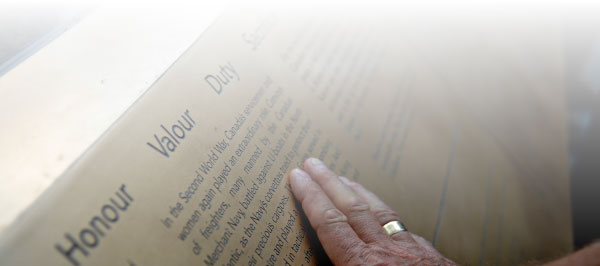
The audit team found that the delivery and quality of care met provincial and professional standards, but made seven recommendations, five of which addressed the need to improve complaint resolution and communications with residents and families. However, since the delivery of health care is a provincial responsibility, VAC does not have the authority to enforce the recommendations. That said, my expectation is that Sunnybrook will act on the recommendations contained in the report and that the Department will do a follow-up survey of Veterans and family members to ensure that they are satisfied with the changes made by Sunnybrook. The audit report should be seen as the starting point for change not an end in and of itself.
On top of all of the activities that I have just mentioned, as part of my outreach, I have spent much time over the past year personally meeting with serving members of the CAF and the RCMP, Veterans and their representatives in various locations across the country from British Columbia to Newfoundland. Over the past year, I have had the privilege of meeting hundreds of Veterans, serving members of the CAF and the RCMP, and their families at town halls and other events and meetings across the country. Their courage, commitment, deep sense of camaraderie, and loyalty to our country is an inspiration to all Canadians. I always appreciate the heartwarming welcome that I receive, and I leave each meeting energized and ready to do more.
In conclusion, I leave you with a thought: I believe that the administration of Veterans’ benefits needs to be considered a national security issue. How Veterans are looked after directly affects the CAF’ ability to recruit and retain Canada’s best. The same can be said about the RCMP. When decisions are being made to put Canada’s sons and daughters into harm’s way, national security decision makers should be considering and allocating the resources necessary for VAC to deal with the future health-related consequences, both physical and mental, of those operations. The true impact of high intensity operations, such as those in Afghanistan, may not be seen for many years. To be ready for this new reality, VAC should always be considering the actions it needs to take to position itself to meet the current and future needs of these Veterans.
I am proud to be of service to Veterans and their families and I want to assure all of you that I will continue to do the best that I can for the Veterans community.
I am committed to making a real difference this coming year in the lives of those who struggle with physical disabilities and mental illnesses incurred in service to their country. Going forward, I want to assure you that the concept of fairness will continue to be central in my discussions with the Minister of Veterans Affairs, other parliamentarians and the Veterans community as my Office prepares for the parliamentary review of the New Veterans Charter in the fall of 2013.
Guy
About the Office
The Swedish word "ombudsman" means "representative of the people."
There are 750,000 Veterans in Canada and more than 100,000 still-serving members of the CAF and the RCMP who one day will join their ranks. Whether or not they receive services and benefits from VAC, I consider all of them and their families to be stakeholders of the Office.
Guy Parent
Overview
The OVO functions in accordance with the standards of practice of the International Ombudsman AssociationFootnote 14, which are endorsed also by the Forum of Canadian OmbudsmanFootnote 15, namely, independence, impartiality and neutrality, confidentiality, and informality. These standards govern the way in which the Office receives complaints, works to resolve issues, and makes objective and evidence-based recommendations to the Minister of Veterans Affairs and VAC.
As an arms-length organization, the OVO acts as an independent voice for all those served by the Department of VAC. As such, it provides direct services to a widely-dispersed client base to ensure that the needs of Canada’s Veterans and their families are considered first and foremost. Additionally, the Veterans Ombudsman has the role of Special Advisor to the Minister of Veterans Affairs in which he has the opportunity to present directly to the Minister matters of importance to the Veterans' community.
The Office gives credence to the Government of Canada’s commitment and recognition of the importance of treating Veterans and their families fairly in regard to VAC programs, services and benefits to which they are entitled. The Office views fairness as an outcome that can be objectively measured in terms of the adequacy, sufficiency and accessibility of the benefits and services in place to address the needs of ill and injured Veterans and those still in uniform.
The Veterans Ombudsman will continue to maintain the One Veteran theme which encapsulates how issues are viewed by this Office. Those with similar illnesses or injury should have access to the same benefits, regardless of the nature of when and where they served.
Our Mandate
- To review and address complaints by clients and their representatives arising from the application of the provisions of the Veterans’ Bill of Rights;
- To identify and review emerging and systemic issues related to programs and services provided or administered by the Department of Veterans Affairs or by third parties on the Department’s behalf that impact clients;
- To review and address complaints by clients and their representatives related to programs and services provided or administered by the Department or by third parties on the Department’s behalf, including individual decisions related to the programs and services for which there is no right of appeal to the Veterans Review and Appeal Board;
- To review systemic issues and those related to the Veterans Review and Appeal Board, where applicable; and
- To facilitate access by clients to programs and services by providing them with information and referrals.
Our Mission Statement
Our mission is to advance the fair treatment of the Veteran community and to uphold the rights articulated in the Veterans’ Bill of Rights by reviewing and addressing complaints, systemic problems and emerging issues regarding the programs, services and benefits provided by VAC.
- We are an independent organization, committed to acting objectively and impartially;
- We are fair in everything we do;
- We maintain the highest ethical and professional standards;
- We are passionate about setting the highest service standards and meeting them for our clients;
- We take principled positions and we act with courage and conviction; and
- We make objective and evidence-based recommendations to the Minister, the Department, or the Veterans Community at large.
Our Vision Statement
An independent and impartial body, the OVO is dedicated to equity and fairness for all Veterans and their families. The Office will be a rallying point for all Veterans issues. An action-oriented organization that anyone can come to on any matter that impacts the Veteran Community, with absolute confidence that the Office will work tirelessly in their best interests. An organization made up of a dedicated, professional and respected team that has the credibility and determination to effect timely and positive change when we encounter a situation of unfairness or inequity regarding Veterans and their families.
Who we serve
The Office stands ready to help members of the Veterans Community, serving members of the CAF and the RCMP, as well as other clients of VAC:
- Veterans of the Second World War and the Korean War
- Veterans of the CAF (Regular Force and Reserve Force)
- Serving members of the CAF (Regular Force and Reserve Force)
- Veterans of the RCMP
- Members of the RCMP
- Immediate family members and caregivers of any of the above-mentioned groups
- Survivors of Veterans of the First World War
Our services
The Office provides four main services:
Information: Frequently, those who call the Office are unaware of the benefits, services, and redress mechanisms available to them. The Office helps them navigate the complexity of the system by providing information about their rights and about the benefits and services provided by VAC and other organizations.
Referrals: The Office assists those who call for help, often as a last resort, by facilitating referrals to service providers that can best assist them.
Complaint resolution: The Office addresses complaints from individuals who believe they have been treated unfairly by VAC or other service providers. To bring closure as quickly as possible, every attempt is made to resolve complaints informally and at the lowest level possible, most often through inquiries and mediation with service providers.
Interventions to address systemic issues: When the facts of a case raise systemic issues that can potentially affect many other Veterans and clients of the Department, when there are multiple complaints about the same issue, or when issues emerge as a result of the Office’s interaction with the Department and the Veterans community, the Office will intervene using various approaches based on the nature and complexity of the issue:
- Simple procedural issues, for example, are discussed informally with the Department to bring resolution as quickly as possible. A telephone call or an exchange of correspondence is often all that is required to bring about change.
- The Office undertakes reviews that summarize the information available on a particular topic as well as the various points of view. Review papers, which do not contain recommendations, are produced for the purpose of facilitating informed discussion of issues of concern to the Veterans community.
- Complex issues may require thorough investigation, leading to a formal report with recommendations to the Minister. These reports are published 60 days after submission to the Minister.
Structure of the Office
The Ombudsman is supported by a team of 37 employees located in Ottawa and Charlottetown, including service representatives, early intervention analysts, investigators, communicators, a legal advisor, a policy advisor, and administrative support staff. The team includes former members of the CAF and the RCMP, as well as experienced public servants, who use their knowledge and expertise to level the playing field by helping Veterans and other clients of VAC navigate the established processes.
The Ombudsman also relies on an Advisory Council for advice on matters of concern to the Veterans community and to foster cooperation among Veterans’ groups and increased dialogue between the Veterans community and the Office. The Advisory Council is comprised of Veterans’ representatives, professional advisors from academia, health care, rehabilitation or other fields as well as affiliate members with varied areas of expertise. The structure of this body changed from committee to council in 2012, eliminating the position of chairperson to foster a more collegial approach to the engagement and discussions of the group.
Organizational chart
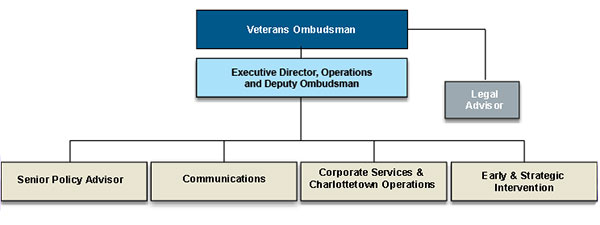
- Veterans Ombudsman
- Legal Advisor
- Executive Director, Operations and Deputy Ombudsman
- Senior Policy Advisor
- Communications
- Corporate Services & Charlottetown Operations
- Early & Strategic Intervention
The Year in Review: 2012–2013
A Veteran’s contribution to our country never ceases, and neither should Canadians’ gratitude to our Veterans. Across the nation, Veterans better their communities with their skills and leadership, as volunteers, coaches, teachers, entrepreneurs, public servants, and everything in between. There is not one community in Canada that is not stronger and more enriched in spirit because of the ongoing commitment on the part of its Veterans. I encourage Canadians to acknowledge the service of the Veterans in your communities, each and every day.
Individual cases
Throughout 2012-2013, the OVO continued to provide assistance through early interventions. It received 6,732 calls, emails and letters. The Office began the year with 236 cases carried over from the previous year and opened 1,845 new cases. A total of 1,953 cases were closed during the year, leaving 127 cases still in progress on March 31, 2013.
Ombudsman Service representatives and early intervention analysts provided information and referrals to VAC, and assistance in resolving complaints in 76 percent of cases. Of the remaining cases (24 percent), four percent were referred to other agencies, nine percent were closed without further intervention by the Office because there were no errors made by the Department, and complainants, while not satisfied with decisions made by the Department, were treated fairly. Cases closed without resolution (11 percent) dealt with issues that fell outside the mandate of the Office or require changes to legislation. Many of the latter cases form the basis of reviews, investigations, or sustained efforts by the Office.
For cases we were unable to resolve, this is attributed to changes needed in legislation.
For cases referred to other agencies, these consist of other government agencies or ombudsman offices.
For cases we were able to resolve, these were resolved through interventions or information requests.
Disposition of the 1,953 cases closed during 2012–2013
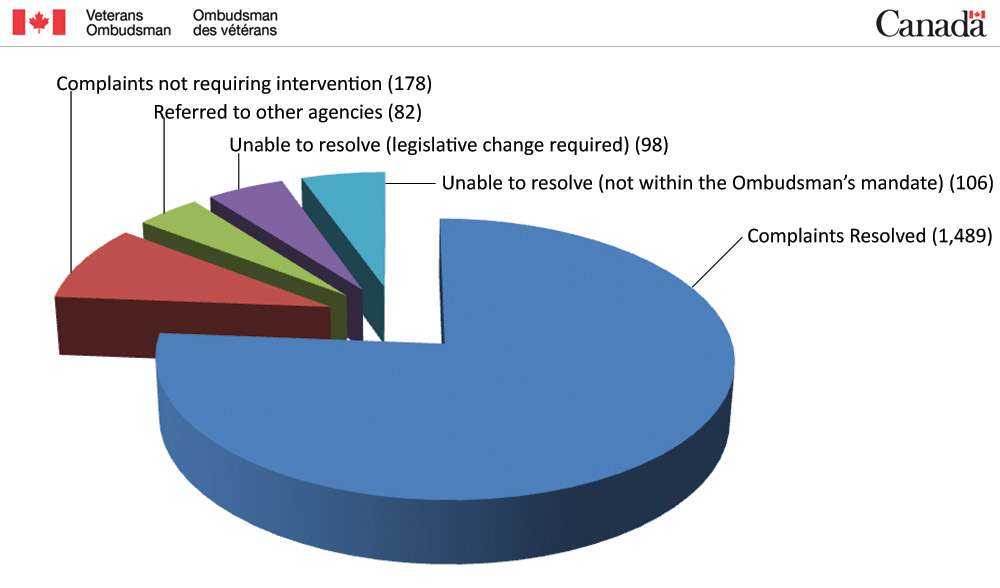
| Disposition (of the 1,953 cases closed during 2012-2013) | Percentage and Number of Cases |
|---|---|
| Complaints Resolved | 76% (1,489) |
| Complaints not requiring intervention | 9% (178) |
| Referred to other agencies | 4% (82) |
| Unable to resolve (legislative change required) | 5% (98) |
| Unable to resolve (not within the Ombudsman’s mandate) | 6% (106) |
Types of Services Provided
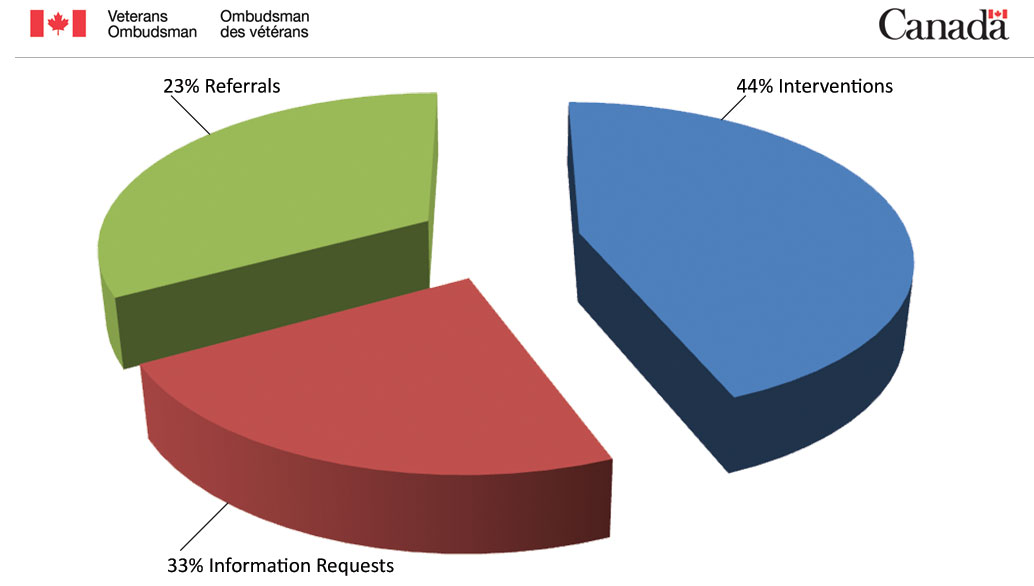
Of the 1,845 new cases received, 44 percent were related to interventions, 23 percent were associated to referrals to the Department or other Agencies and 33 percent were information requests.
Main issue areas – 84 percent of all 1,845 new cases
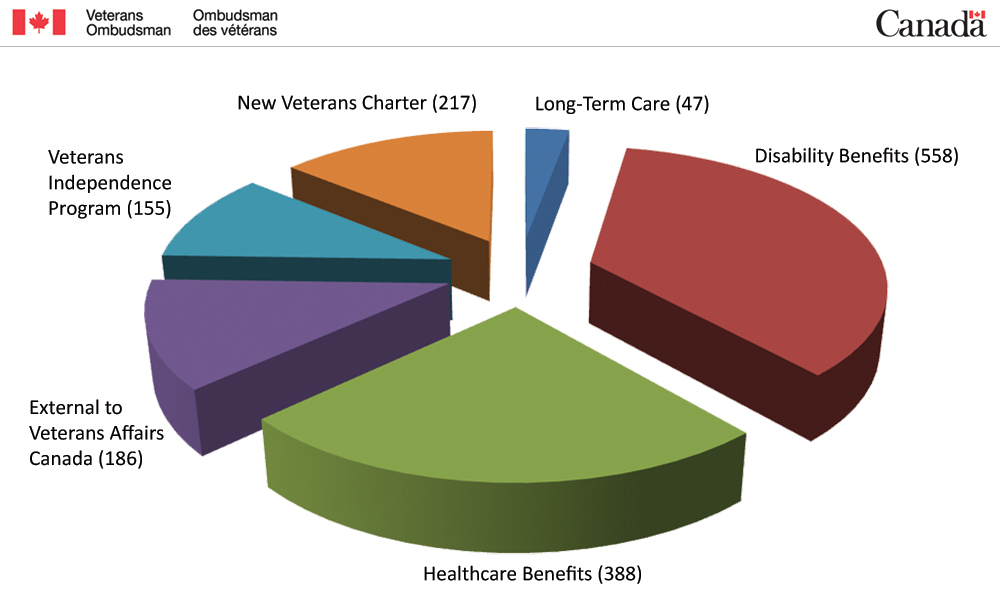
- Disability Benefits:
- (including disagreement with decision outcome and issues related to the assessment and reassessment of conditions, disability pension retroactivity)
- Healthcare Benefits:
- (including delays in health-related travel reimbursement turnaround times, concerns regarding VAC’s refusal to cover funding for Post Traumatic Stress Disorder service dogs)
- External to VAC:
- (including RCMP Long Term Disability/ Disability Benefits clawback, SISIP class action payments)
- Veterans Independence Program:
- (including issues regarding ineligibility due to legislation, regulations and policy and the delivery of this service)
- Long Term Care:
- (including concerns with VAC delivery of this service and reimbursement turnaround times)As in past years, the majority of new cases were brought to the OVO by former and serving members of the CAF (Regular and Reserve Forces) and by traditional Veterans (Veterans of the Second World War and the Korean War). However, New Veterans Charter issues in 2012-2013 almost doubled.
- New Veterans Charter:
- (including Earnings Loss overpayments due to Disability Pension claw-back, reimbursement turnaround times with Canadian Veterans (CANVET), permanent impairment allowance retroactivity)
New Veterans Charter Issues
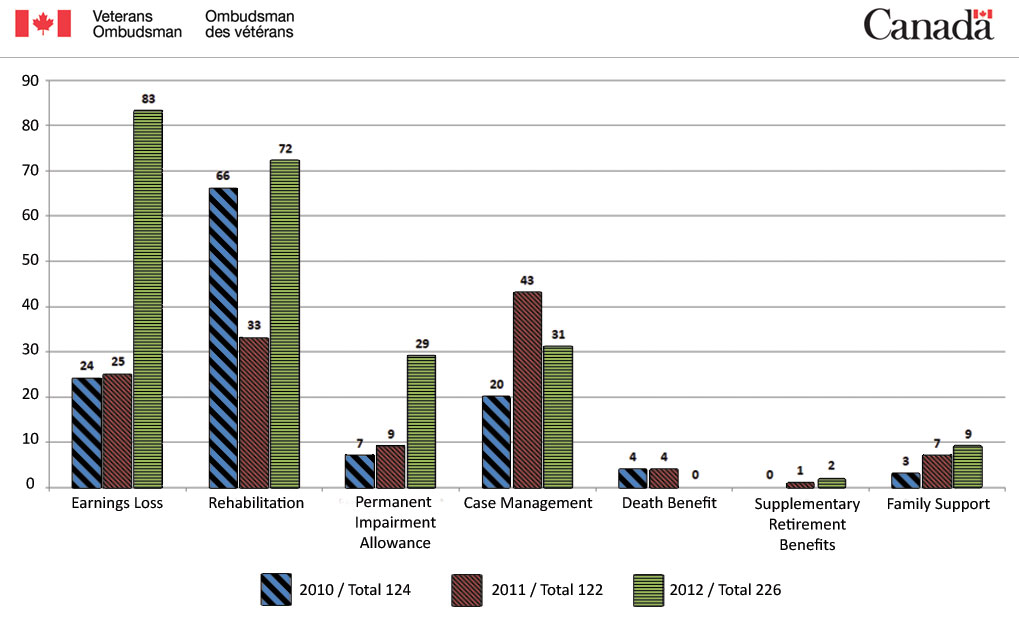
Earnings Loss Benefit issues:
- Fully half of the Earnings Loss Benefit calls were related to harmonization of the set-off and any planned retroactivity by VAC;
- Another area concerning Earnings Loss Benefit was overpayments due to Disability Pension set-off; and
- There were three Earnings Loss Benefit issues brought forward by Reserve Force stakeholders concerning the imputed income/minimum salary establishment between Reserve and Regular Force personnel.
Rehabilitation issues jumped significantly:
- The main focus was on issues with CANVET, the cancellation of individual rehabilitation programs, concern with case management and with barriers to attaining university level post secondary education or professional designations.
Increases in the Permanent Impairment Allowance issues:
- These were primarily related to adjudication turnaround times, decision outcome (denial of benefits) and Permanent Impairment Allowance retroactivity.
Case management issues:
- Most rested with delays in callbacks to Veterans, personality conflicts between a Veteran and a case manager, and rejected requests to change case managers.
This significant increase in New Veterans Charter issues is reflected in the increase in the number of Regular Force clients, up 11 percent since 2011-2012. It is reflected also in the increases in New Veterans Charter and disability issues.
Service Category
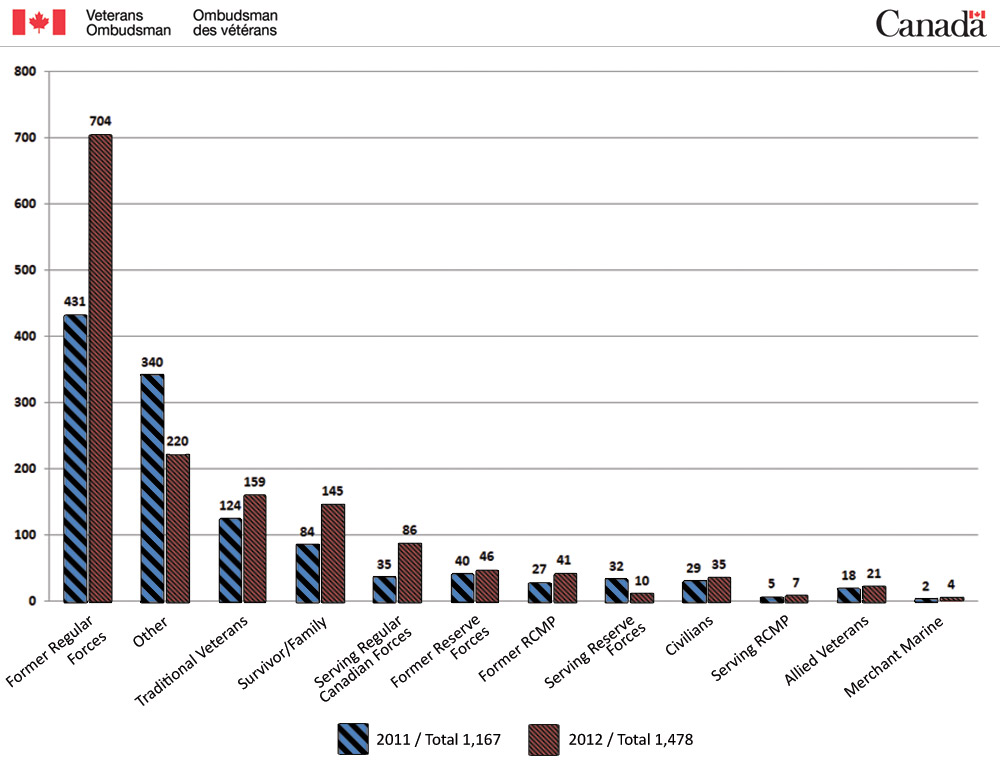
| Service Profile | Percentage |
|---|---|
| Footnote * Former members of the Canadian Armed Forces | 48% |
| Footnote * Serving members of the Canadian Armed Forces | 6% |
| Footnote ** Traditional Veterans | 11% |
| Allied Veterans | 1% |
| Former and Serving Members of the Reserve Force | 9% |
| Former and Serving Members of the RCMP | 3% |
| Survivors / Family Members | 10% |
| Civilians | 2% |
| Unknown | 10% |
Demographic Breakdown by Service Category
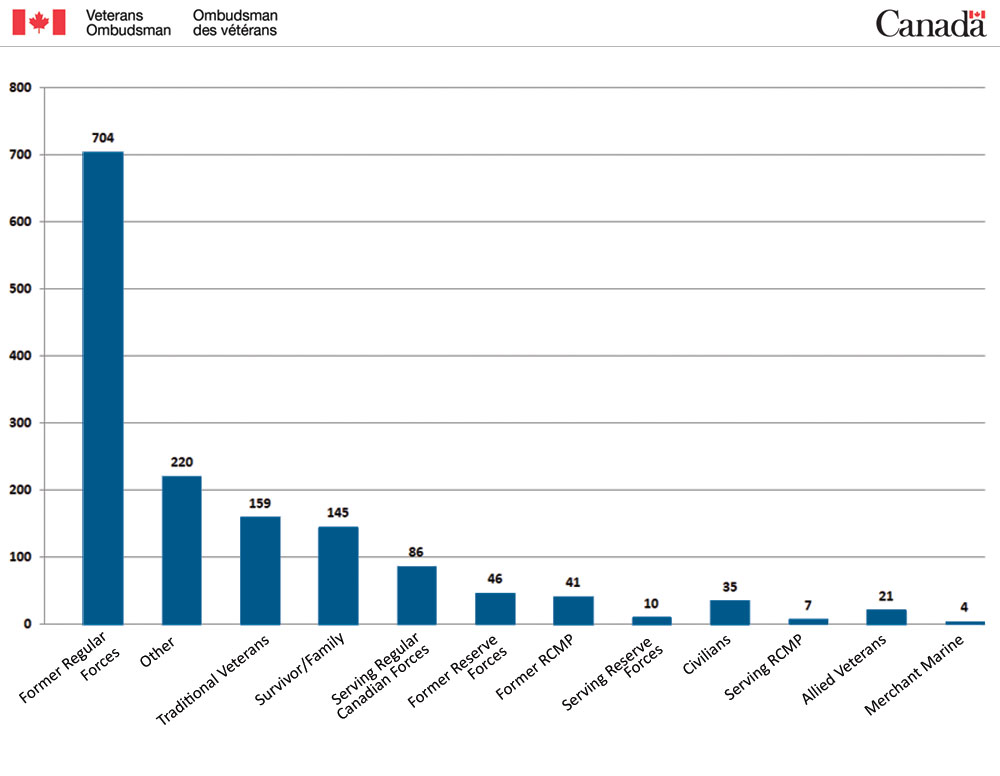
| Service Category | Number of Clients |
|---|---|
| Former Regular Forces | 704 |
| Other | 220 |
| Tradtional Veterans | 159 |
| Survivor/Family | 145 |
| Serving Regular Canadian Forces | 86 |
| Former Reserve Forces | 46 |
| Former RCMP | 41 |
| Serving Reserve Forces | 10 |
| Civilians | 35 |
| Serving RCMP | 7 |
| Allied Veterans | 21 |
| Merchant Marine | 4 |
Geographic Profile
| Geographic Location | Percentage of Clients |
|---|---|
| Atlantic | 22% |
| Quebec | 16% |
| Ontario | 28% |
| Prairies | 5% |
| Alberta | 8% |
| British Colombia | 14% |
| Foreign / Unknown | 7% |
Demographic Breakdown by Province
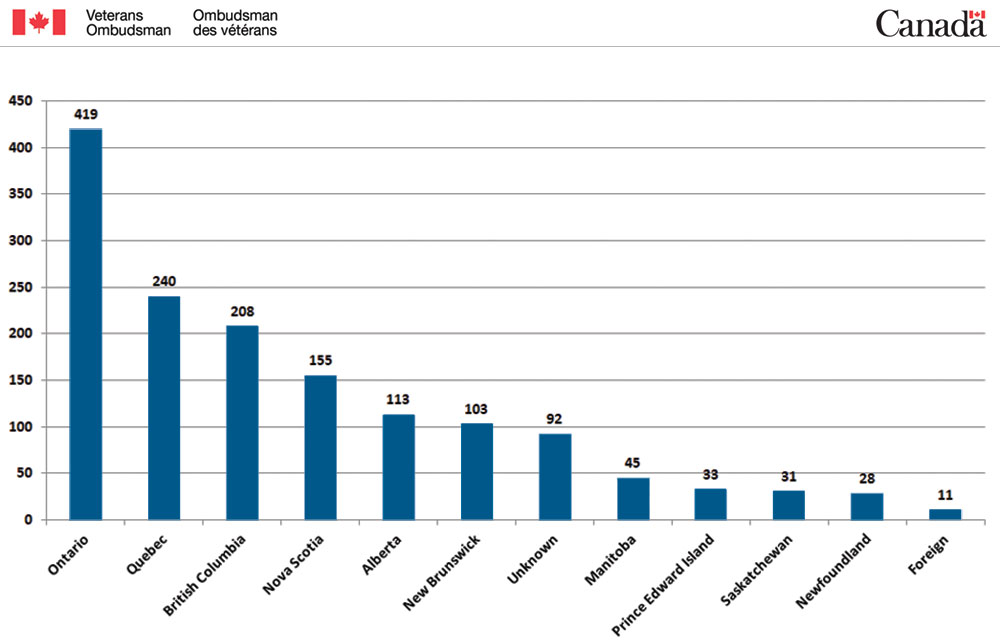
| Province | Demographic Breakdown |
|---|---|
| Ontario | 419 |
| Quebec | 240 |
| British Columbia | 208 |
| Nova Scotia | 155 |
| Alberta | 113 |
| New Brunswick | 103 |
| Unknown | 92 |
| Manitoba | 45 |
| Prince Edward Island | 33 |
| Saskatchewan | 31 |
| Newfoundland | 28 |
| Foreign | 11 |
The two percent increase in issues from Veterans based in Ontario continues the trend of the past year from 2011. The significant portion on this chart is the steady increase in former Regular Force members, up 11 percent since 2011. This cohort increase is also reflected in the increases in New Veterans Charter and disability issues. There were also increases in survivors (up three percent) and serving Regular Force members (up three percent).
Demographic Breakdown by Age
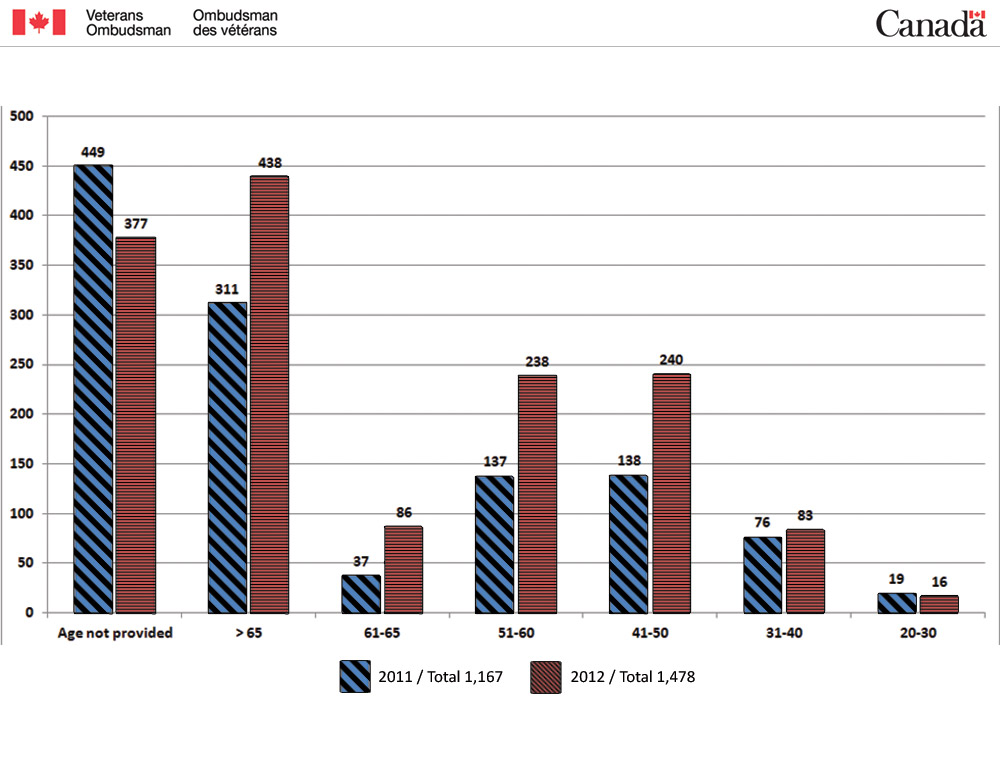
The majority of the Veterans who contact the OVO are over the age of 65 (30%). Another 32 percent are in the 41-60 age ranges. In addition, the increase in those aged 41 to 65 may be attributed to the overall increase in former Regular Force stakeholders.
Demographic Breakdown by Gender
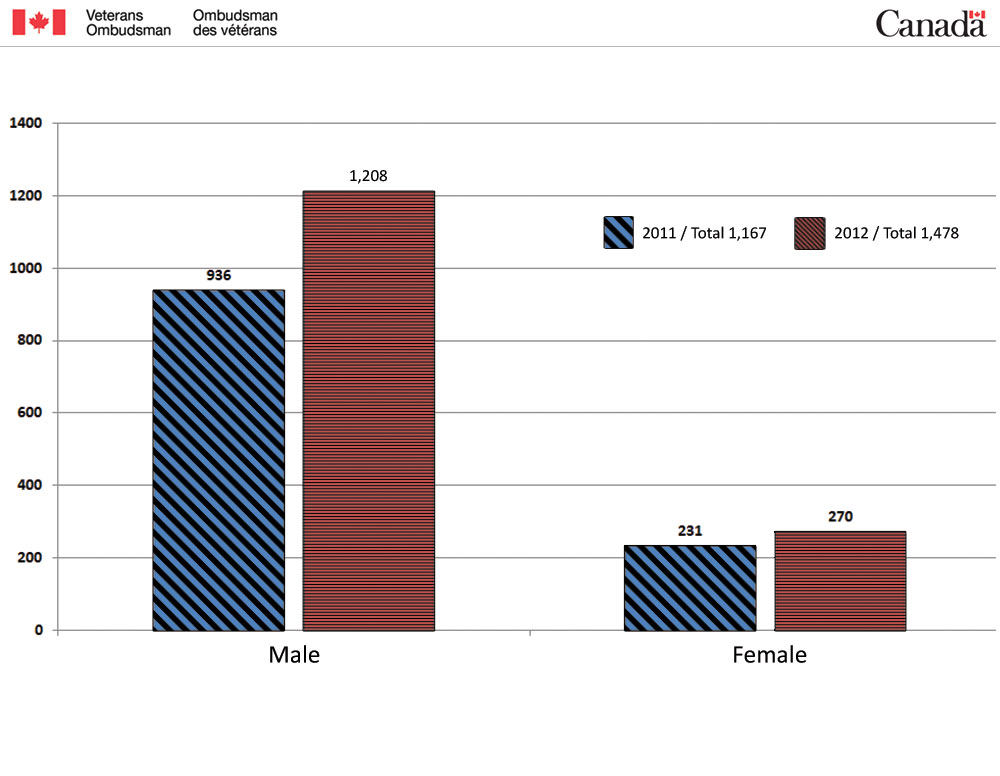
The percentage of males to females remains similar to last years with approximately one female to every four males.
How Veterans Contact the Office of the Veterans Ombudsman
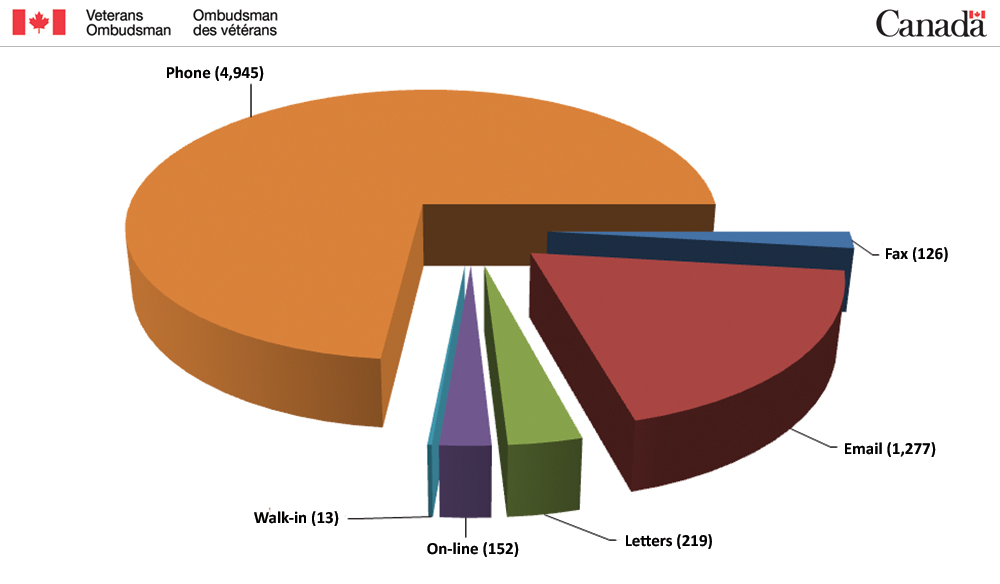
In relation to the 6,732 total canvassed, phone and email are the lead means of communication Veterans and their families use when contacting the OVO. Telephone was used by 73 percent of all of our contacts in 2012-2013. We continue to maintain an excellent service standard with 96 percent of calls answered.
Source of Awareness
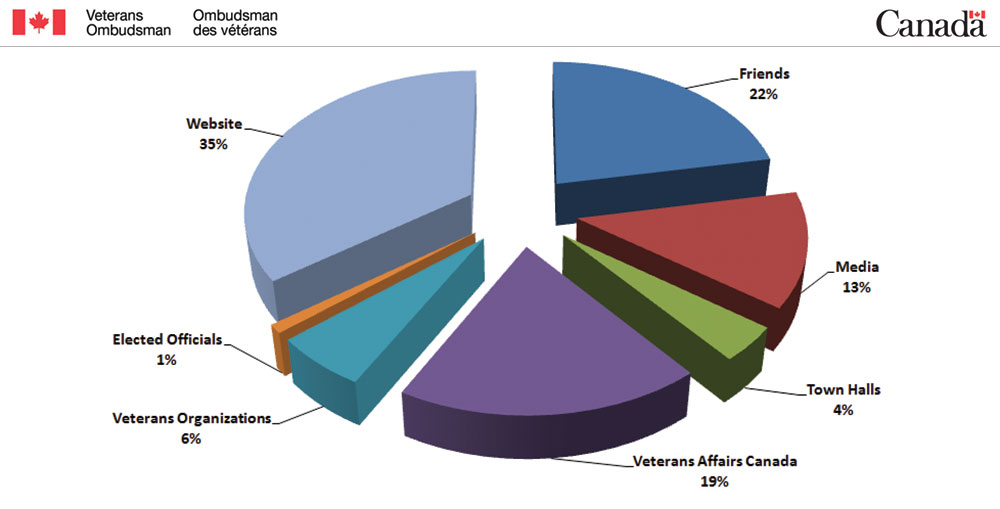
In April 2012, we began capturing data as to how our clients have heard about the OVO. Although only one year into it, we can already start to see some trends, as shown below. Visits to our website and hearing from friends, or word of mouth, resulted in 57 percent of all contacts. Also of significance is the level of referrals from VAC of 19 percent.
Corporate initiatives
A number of initiatives were undertaken during 2012-2013 to enhance the internal corporate support services for the Office of the Veterans Ombudsman (OVO).
Access to Information and Privacy
On April 24, 2012, the Minister of Veterans Affairs signed new delegation orders for the Access to Information Act and the Privacy Act. The Minister delegated the Veterans Ombudsman, Director General, Legal Advisor, and Director Corporate Services and Charlottetown Operations full authority to exercise the powers, duties, and functions of the Minister as the head of VAC, under the provisions of the Acts and related regulations for the OVO. The new delegation order was in place for fiscal year 2012-2013.
During 2012-2013, a Memorandum of Understanding (MOU) between VAC and the OVO was signed reflecting the working relationship between the Department’s Access to Information and Privacy Division and our office in relation to the administration of the Access to Information Act and the Privacy Act. This arrangement ensures a common understanding of the responsibilities between VAC-ATIP Division and our office with respect to matters related to the administration of the Acts. In order to implement the new MOU and delegation orders, the Office developed a governance structure for Access to Information and Privacy, defined roles and responsibilities, developed operational processes, and established a new Access to Information and Privacy (ATIP) unit within the Office.
During 2012-2013, the OVO-ATIP unit:
- Completed training specific to ATIP specialists;
- Delivered in-house training sessions on Access to Information and Privacy to all staff;
- Developed ATIP procedures, and processes to support new roles and responsibilities;
- Administered the Access to Information and Privacy Acts for the OVO per the MOU;
- Developed an OVO-WIKI page for ATIP to communicate relevant materials to all OVO staff;
- Launched a new ATIP section on the OVO website to inform requestors of their rights under both Acts, how to submit a request to the OVO-ATIP unit, and to report publicly on completed Access to Information requests;
Worked closely with VAC - ATIP to process requests received by VAC (prior to the new delegation order being in place) that related to the OVO; and - Worked closely with VAC - ATIP to provide relevant information for the consolidation of the Annual Reports to Parliament on the administration of the Access to Information Act and the Privacy Act.
During 2012-2013, the OVO also completed a Privacy Impact Assessment (PIA) as a pro-active measure to assess the Office’s privacy practices with respect to its core mandate to ensure that privacy is appropriately considered and designed into business processes. The PIA was provided to the Treasury Board Secretariat with a modified Personal Information Bank description, and was simultaneously provided to the Office of the Privacy Commissioner.
In addition, the OVO developed a PIA Risk Mitigation Action Plan to implement measures to mitigate the risks identified in the PIA. The OVO also developed a new PIA section on the OVO website to report publicly on the PIA and progress on the action plan.
Information Management
In order to meet the Office of the Veteran Ombudsman’s obligations for the Recordkeeping Directive, the Office developed and started to implement a Recordkeeping Directive Compliance Action Plan.
During 2012-2013, the Office:
- Completed training, workshops, and interdepartmental meetings specific to Information Management specialists;
- Delivered an in-house session on Information Management and the Office’s action plan to all staff;
- Ensured all staff completed the “Recordkeeping for Public Servants” course delivered by the Canada School of Public Service;
- Developed and circulated guidance for staff on naming electronic documents and cleaning up email accounts;
- Initiated a cleanup of transitory paper records;
- Developed an OVO-WIKI page for Information Management to communicate relevant materials to all OVO staff; and
- Engaged subject matter experts with VAC, Library and Archives Canada (LAC), and the Treasury Board Secretariat to better understand Government of Canada direction for Information Management, implementation of an Electronic Document and Record Management solution, and LAC’s renewed Disposition and Recordkeeping Program.
Communications and Outreach
Communications are central to the work of the Veterans Ombudsman to not only inform and educate, but also to learn, encourage dialogue, and bring about change. The OVO uses a variety of means to promote discussion with the Veterans community to ensure that Veterans’ concerns are reflected in the work of the Office, and to engage parliamentarians and other decision-makers and influencers on Veterans’ issues.
- Communications and outreach activities are carried out:
- To enhance awareness and understanding of the Veterans Ombudsman’s role and mandate;
- To raise awareness among Veterans and other clients of VAC of the services provided by the OVO;
- To increase understanding of Veterans’ issues and foster informed dialogue about them; and
- To build support among legislators and senior officials of VAC for the Veterans Ombudsman’s recommendations for improvements to the programs and services supporting Veterans.
It is also a communications priority to raise awareness of the valuable contributions that Veterans and the more than 6,000 men and women who retire every year from the CAF and the RCMP continue to make to society after service to their country.
The Veterans Ombudsman had a busy year meeting with Veterans and their families, Veterans’ organizations, other Veterans-support groups, institutions and organizations, and members of local, regional and national media. These meetings are important two-way communications for the Veterans Ombudsman to let people know what he is doing to help Veterans and to answer questions about the Office and issues of importance to the Veterans’ community.
The Ombudsman also met with municipal elected officials to discuss ways they can provide assistance to Veterans and to raise awareness of the immense contribution that Veterans make to society after service to their country.
Engaging parliamentarians and other decision makers on Veterans’ issues remained a priority. In addition to appearances before parliamentary committees, the Ombudsman’s reports were disseminated broadly to all Members of Parliament and Senators. His outreach initiatives, speaking engagements and reports were also widely reported on by local, regional and national media, which further raised public awareness of the needs of Veterans.
Professional Development Program
The OVO began a Professional Development Program in 2012-2013.
Retention and succession planning are critical to the Early and Strategic Intervention Directorate. As such, a Professional Development Program, which trains and develops employees from the PM02 through to the PM05 level was created.
The Program began training entry level PM employees early in the fiscal year. Its goal is to improve retention and provide the required training and skills for filling vacancies up to the PM05 level.
Through the program the Office is recruiting, developing and retaining a knowledge-based analyst group that will continue to provide the best possible services to clients by addressing systemic issues of concern to all in the Veterans community.
The Veterans Ombudsman's Commendation
The Veterans Ombudsman’s Commendation is awarded in recognition of the efforts of individuals and groups who work courageously and tirelessly to identify and advance issues on behalf of Veterans of the CAF and the RCMP, and their families. Throughout the year, our Office calls for nominations from the Veterans community, and reviews each nomination with help from our Advisory Council. The intent of the Veterans Ombudsman’s Commendation is to acknowledge the extraordinary dedication of individuals or groups regardless of the substance or success of their efforts.
This year, the Veterans Ombudsman’s Commendation was awarded to four individuals, listed below, who demonstrate exceptional leadership on behalf of Veterans. The recipients were honoured at a ceremony in Halifax, Nova Scotia where my entire team had the honour of welcoming them and hearing more about their incredible efforts. I was proud to have the opportunity to acknowledge their admirable work and remarkable contributions to the betterment of the lives of Canadian Veterans.
Jerome Burke is a dedicated ambassador for the Army, Navy & Air Force Veterans in Canada (ANAVETS). He served in various executive roles with ANAVETS over the past ten years and currently serves as Vice President of the Dominion Command and as their National Advocacy Committee Chairman. Jerome spearheaded major fundraising events for his ANAVETS’ unit and many other organizations – raising tens of thousands of dollars for his community. Jerome is also member of the Royal Canadian Legion. With his extraordinary leadership, Jerome demonstrates the positive impact Veterans have on their communities. Jerome resides in New Waterford, Nova Scotia.
William (Bill) Gidley has contributed more than 10 years to the RCMP Veterans’ Association, serving as Executive Director. In his recent role as National Advocate for the RCMP Veterans’ Association, Bill remained committed to promoting the fair treatment of Veterans and their families in accordance with the Veterans Bill of Rights. A noteworthy leader, Bill has been at the forefront of helping RCMP Veterans obtain benefits from VAC. Bill resides in Orleans, Ontario.
John D. Gillis has dedicated more than 50 years of tireless service to the Royal Canadian Legion, many years to the Korean Veterans Association and has held executive roles with the Army, Navy & Air Force Veterans in Canada (ANAVETS). His distinguished leadership and superlative work with the Deer Lodge Centre in Winnipeg exemplifies the deep concern he has for the welfare of the most vulnerable Veterans. John continues to be a committed, active member of the Deer Lodge Foundation Board and its Joint Veterans Committee. John resides in Winnipeg, Manitoba.
David Munro, currently serving as Zone Commander, South/Mid Vancouver Island, for the Royal Canadian Legion, has devoted more than 20 years to serving Veterans, including as President of the Canadian Peacekeeping Veterans Association. He actively participated in the development of the New Veterans Charter, and played a significant role in the crafting of the Seventh Book of Remembrance. With remarkable leadership, David was instrumental in the development of low income, quality housing for Veterans and seniors in his community, and in initiating the Cockrell House project for homeless Veterans in Colwood. David resides in Chemainus, British Columbia.
Looking Ahead: 2011-2012
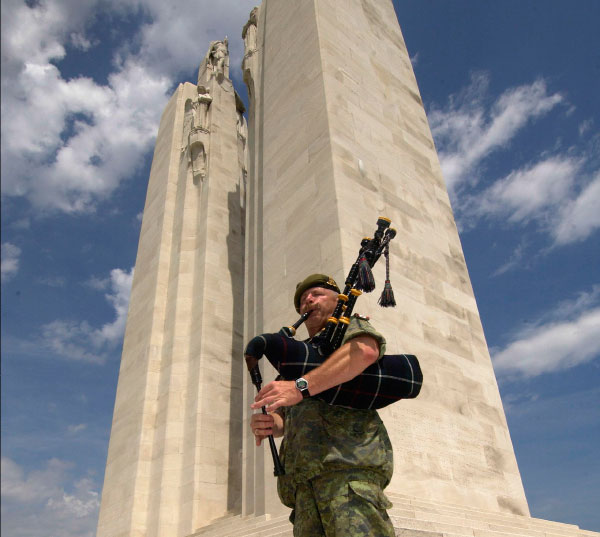
I will continue to encourage parliamentarians and senior officials of VAC to consider the needs of Veterans through a lens of fairness: Are the right programs and services in place to meet their needs? Are the right programs sufficiently resourced? Are eligibility criteria creating unfair barriers and can services and benefits be accessed quickly and easily? I will also continue to remind all that support of ill or injured Veterans is a remittance of a debt incurred by the Government of Canada. A debt that must be honoured.
Review of the New Veterans Charter
The OVO will release a series of publications on the New Veterans Charter in 2013, starting with the April release of Improving the New Veterans Charter: The Parliamentary Review. The purpose of the Review will be twofold: to focus discussion on the Fall 2013 parliamentary committee review of the enhancements to the New Veterans Charter that resulted from the coming into force of the Enhanced New Veterans Charter ActFootnote 16 on October 3, 2011; and to act as a catalyst to broaden the review of the New Veterans Charter.
The Review will focus on three key transition issues: financial instability and decreased standard of living caused by reduced post-release income and insufficient financial support after age 65; limitations in vocational rehabilitation and assistance support, which can affect second career aspirations and employment options; and difficult family environment situations due to insufficient family support.
Following an extensive stakeholder consultation, and prior to the fall parliamentary committee hearings, the Office will release a Report on the New Veterans Charter accompanied by an Actuarial Analysis. The Report will put forward evidenced-based recommendations that address the shortcomings in the Charter identified in the Review. Importantly, it will be the first time that recommendations for improvements to the New Veterans Charter will be supported by an actuarial analysis that pinpoints exactly where the current suite of New Veterans Charter benefits are failing some Veterans today, and will continue to fail them unless changes are made quickly.
In addition, the Office will release a report on vocational rehabilitation that will examine the delivery and adequacy of VAC’s vocational rehabilitation and assistance services and present recommendations to ensure that VAC maintains its commitment to effectively re-establish Veterans into civilian life.
Veterans’ Health Care Benefits and Programs
In 2013-2014 into early 2014-2015, the OVO will publish a series on Veterans’ health care benefits and programs that Veterans may access depending on their level of need over the course of their lifetime. It will begin in the summer of 2013 with the publication of a review on Long-Term Care Program and will continue with a review of the Veterans Independence Program, as well as a review of federal and provincial services available for those Veterans in need of assisted living. This will complete the continuum of care as offered by the Department and will offer a snapshot of the administration of these benefits and programs. In addition, the Office will release a follow-up report that will tie together information from the Long-Term Care Program review and upcoming reviews of the Veterans Independence Program and Assisted Living in order to provide recommendations for improvements for Veterans and their families.
Review on Long-Term Care
The release of a review of Veterans’ Long-Term Care Program is slated for the summer of 2013. It will examine the eligibility, accessibility and cost of VAC’s Long-Term Care Program with an aim to foster a common understanding of VAC’s current role in the funding of long-term care benefits for Veterans under the Long-Term Care Program.
The Long-Term Care Program financially supports eligible Veterans in various residential care situations, namely adult residential care, intermediate care, and chronic care. Eligibility for these different levels of care is complex and involves a determination of service and program eligibility. In the majority of cases, Veterans and other clients of the Department must first meet provincial eligibility criteria before being considered for the Long-Term Care Program. While provincial eligibility is based on health care need, the Department’s eligibility criteria takes into consideration both health need and client type, which is dependent on where or when a Veteran served.
Veterans, especially those residing outside of urban or Veteran-population centers, experience continued difficulty finding long-term care within or close to the communities in which they reside, and are at times placed on waiting lists for beds funded by the Department in their preferred facility due to the provinces’ determination of whom to provide priority access.
Update Review of the 2012 Analysis of Federal Courts Decisions Pertaining to the Veterans Review and Appeal Board
A follow-up report to the May 7, 2012: Veterans’ Right to Fair Adjudication: Analysis of Federal Courts decisions pertaining to the Veterans Review and Appeal BoardFootnote 17 will be completed in 2013-2014. Its purpose is to determine the extent to which VAC, the Veterans Review and Appeal Board and the Minister of Veterans Affairs have implemented the recommendations made in the OVO’s 2012 Report.
Success Stories
Significant Increase in Disability Assessment
A Veteran contacted the OVO because he was unsatisfied with the initial (interim) assessment of 28 percent that he had received for several major injuries sustained as a result of an IED explosion. The Office contacted VAC’s Head Office Senior Medical Advisor and through discussion was able to have the injuries evaluated holistically (as opposed to each in isolation). This resulted was an increase in the assessment from 28 percent to 72 percent.
Veteran’s Vocational Rehabilitation Plan Gets a Second Look
A Veteran contacted the OVO because he was feeling unsure about the career path VAC had selected for him and was worried that the Department was on the verge of closing out his Vocational Rehabilitation Plan. This Veteran had served as an air traffic controller and a trucker in the CAF. The Department’s vocational service provider had sent the Veteran to a custom broker training program, but the Veteran did not feel that this was a suitable gainful employment career path for him. The Veteran claimed that all that was required to become a custom broker was some studying and successful completion of a written exam at a cost of $500. Our Office contacted the Department to address the Veteran’s concerns and through discussion, the Department agreed to keep the Veteran’s Vocational Rehabilitation Plan open so that other, more suitable occupational goals could be explored.
Home Gym Equipment Approved
A Veteran pensioned at 100 percent had been waiting for a year for approval of home gym equipment to help alleviate the pain to his condition caused by excessive car travel. This Veteran is required to do a six hour return trip three times a week to the nearest town to get physiotherapy treatment. The Veteran had submitted to VAC a prescription from his doctor and a written recommendation from his physiotherapist for the home gym equipment, but it had not been approved by his Case Manager. By intervention of the OVO, the home gym equipment was approved and the Area Director of the Region was to investigate the situation.
Permanent Impairment Allowance Approved
A Veteran applied to the Rehabilitation Program and at the same time submitted an application for the Permanent Impairment Allowance (PIA). The PIA application was declined because the Rehabilitation Program request had not yet been approved – a requirement of PIA application. When the Rehabilitation Program was approved, the PIA was not considered. The Veteran contacted the OVO seeking help to get his PIA application approved. By intervention of the Office, this Veteran will receive all the PIA benefits for which he is eligible.
An Outstanding Ambulance Bill is Paid
A Veteran contacted the OVO because he had an outstanding ambulance bill that had been sent to a collection agency. The Veteran had submitted the bill to VAC for payment, but the Department denied payment due to insufficient information. Our Office intervened with the collection agency and asked them to put it on hold while we investigated the issue. After proving to the Department that the ambulance service was incurred as a direct result of the Veteran’s pensioned condition, it agreed to pay the ambulance bill. We then updated the collection agency and confirmed that payment would be issued.
Appendix—Financial Report
The Treasury Board authorized the OVO a budget of $6.3 million for fiscal year 2012–2013, of which $4.07 million was directly allocated to the Office program and operational costs.
Treasury Board Funding 2012-2013
| Organization | Salary | Operating | Total Funding |
|---|---|---|---|
| Office of the Veterans Ombudsman | $2,750,000 | $1,320,000 | $4,070,000 |
| Public Works & Government Services Canada (Accommodations) |
--- | $459,000 | $459,000 |
| Treasury Board (employee benefits) | $638,118 | --- | $638,118 |
| Veterans Affairs Canada (provision of services to the Office) |
$787,652 | $380,000 | $1,167,652 |
| Totals | $4,175,770 | $2,159,000 | $6,334,770 |
2012-2013 Summary of Expenditures
| Organization | Expenditures |
|---|---|
| Office of the Veterans Ombudsman | $3,637,398 |
| Veterans Affairs Canada (provision of services) | $1,167,652 |
| Public Works and Government Services Canada (accommodations) | $459,000 |
| Treasury Board (employee benefits) | $638,118 |
| Total Expenditures | $5,902,168 |
Veterans Ombudsman Program and Operational Expenditures 2012-2013
| Program and Operational Requirements | Expenditures |
|---|---|
| Travel and Transportation | $205,997 |
| Professional and Special Services | $486,135 |
| Salaries and Wages | $2,685.447 |
| Training and Professional Development | $66,743 |
| Telecommunications | 61,837 |
| Equipment, Supplies, Repairs and Maintenance | $74,725 |
| Printing, Publishing and Advertisement | $44,837 |
| Rentals | $11,518 |
| Miscellaneous | $159 |
| Total Expenditures | $3,637,398 |
Canada's Veterans
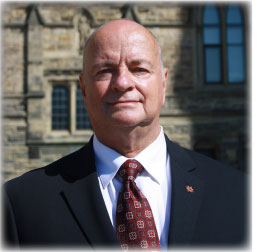
Canadians have much to celebrate: freedom of speech, freedom of religion and peaceful assembly, social justice, democracy and the rule of law. These freedoms were hard won by Canadians willing to risk their lives to defend them. While the majority of serving men and women leave the service healthy, a great number of them return to civilian life ill or injured. As a nation, we have the obligation to take care of those who were put in harm’s way to protect our rights and freedom. Ensuring that their needs are met is the nation’s greatest and most meaningful expression of gratitude.